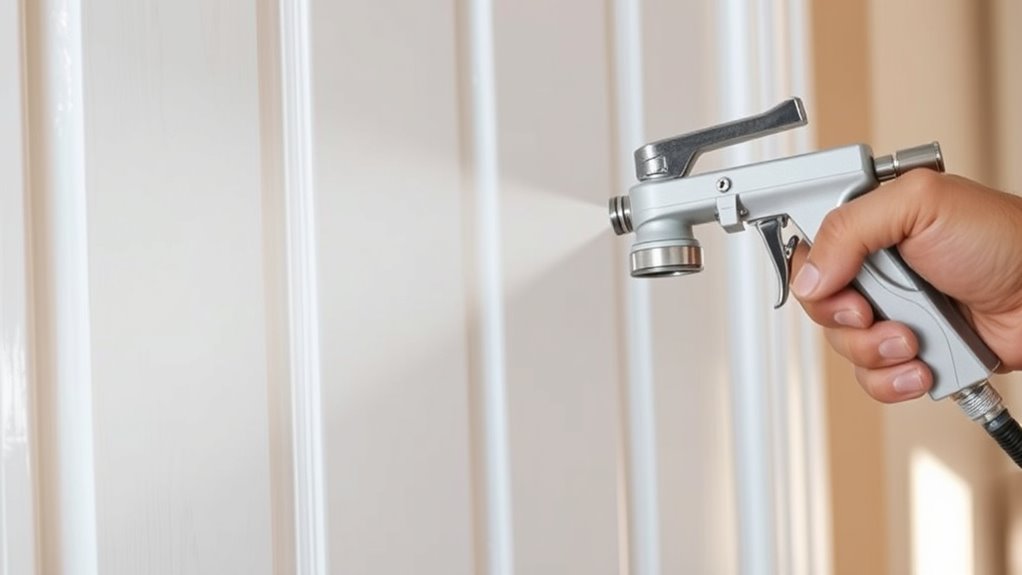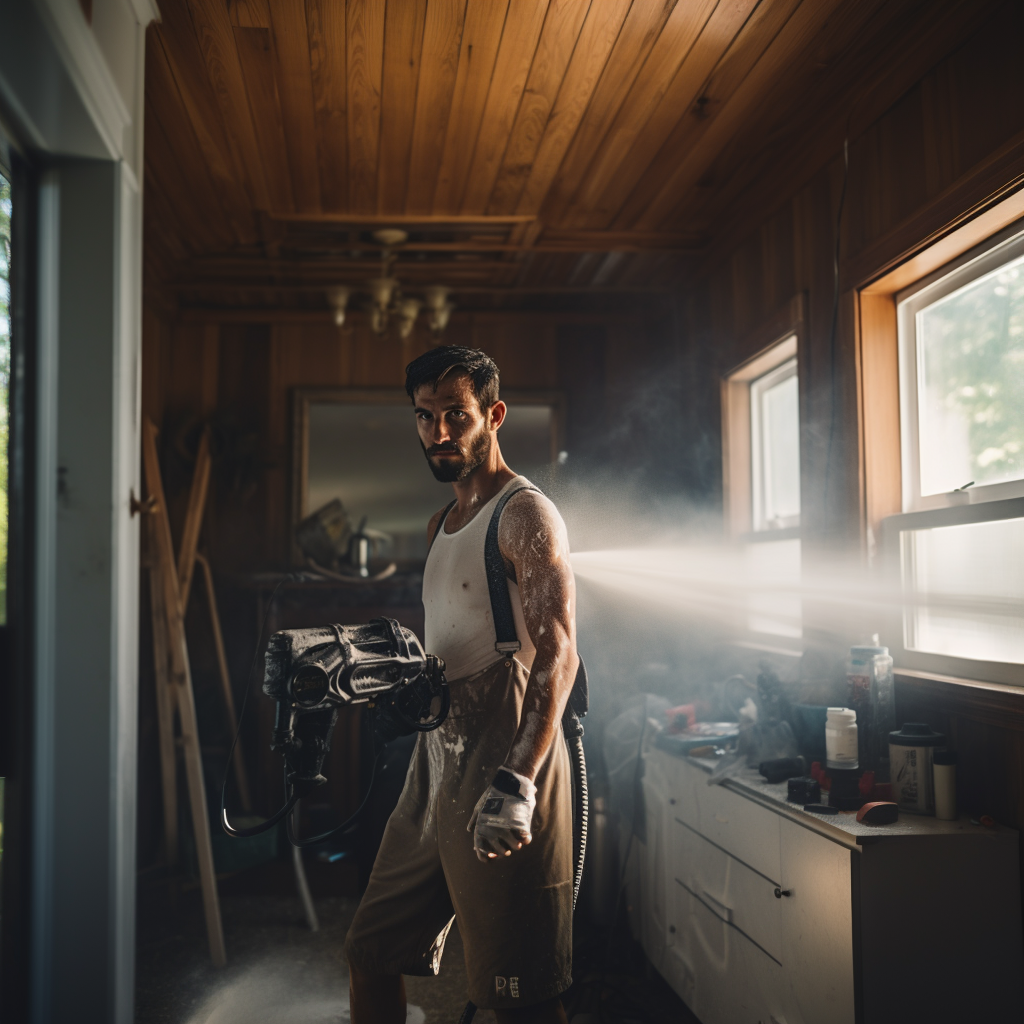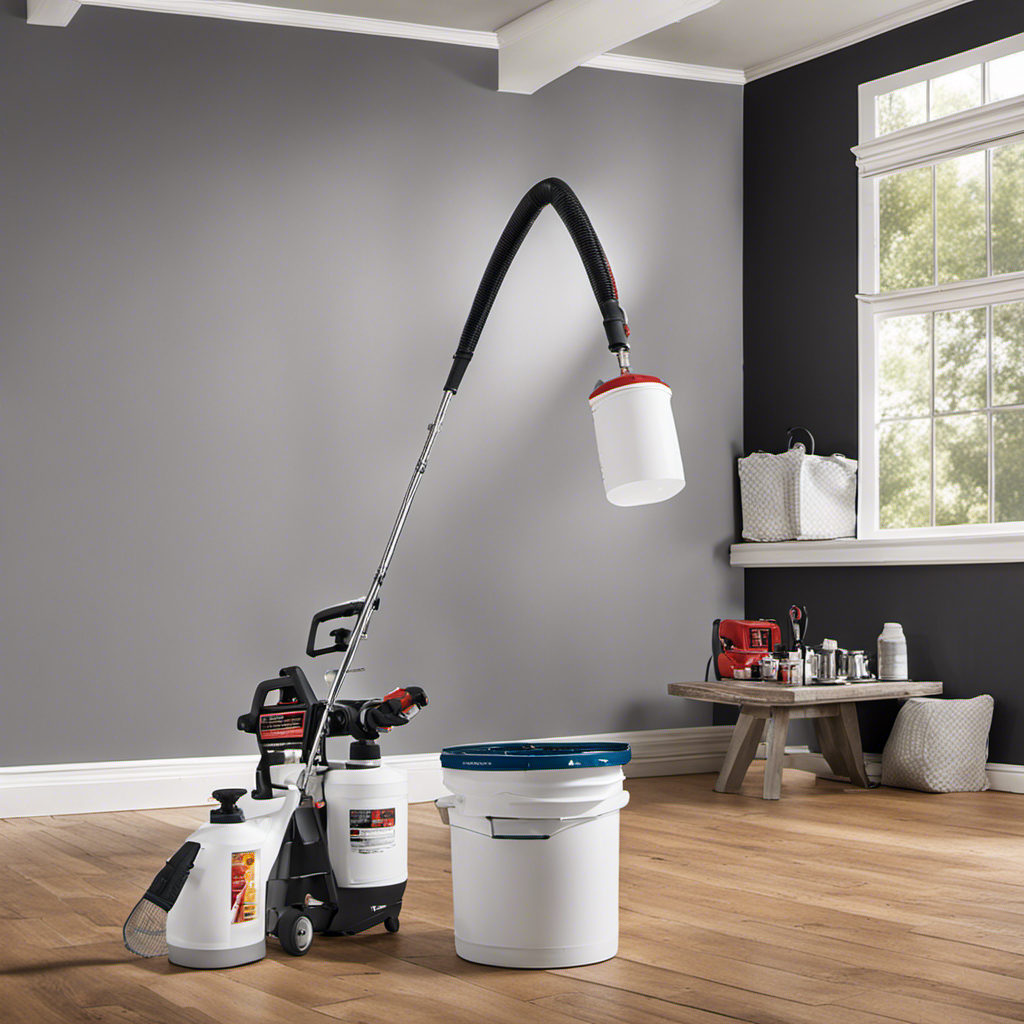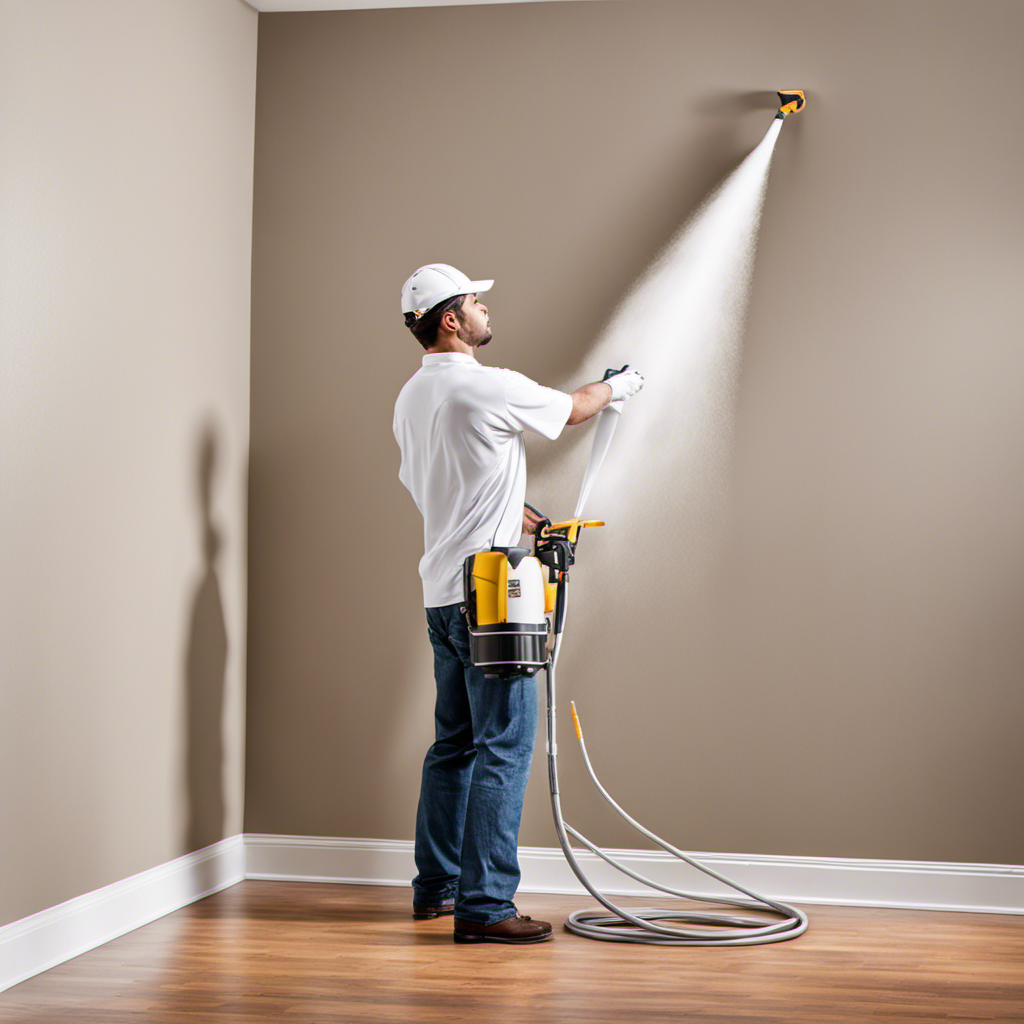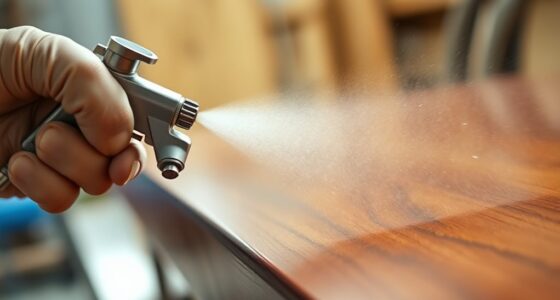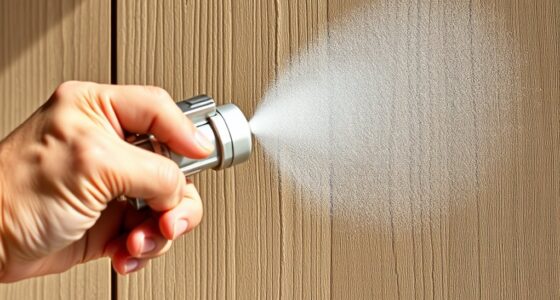To achieve a glass-smooth finish when spraying interior doors, make certain your sprayer is clean and properly maintained, using thin, even coats with about 50% overlap. Keep the gun 6 to 12 inches from the surface and maintain steady speed and consistent distance. Practice on scrap first to dial in your settings. Working in small sections and applying multiple lightweight coats will help prevent drips and sags. Continuing will reveal tips to perfect your spray technique and achieve professional results.
Key Takeaways
- Maintain a consistent distance of 6 to 12 inches from the door surface during spraying.
- Apply multiple thin, even coats with proper overlap to build a smooth, glass-like finish.
- Keep the spray gun perpendicular to the surface and practice steady, controlled movements.
- Use high-quality paint and a suitable nozzle for fine atomization and minimal orange peel.
- Sand lightly between coats with fine-grit sandpaper to achieve a flawless, glass-smooth surface.

Spraying interior doors is an efficient way to achieve a smooth, professional finish with less mess and effort. To get the best results, you need to master your spray gun and refine your technique. Before you begin, make sure your spray gun is well-maintained. Regularly clean the nozzle and air cap after each use to prevent clogs and ensure a consistent spray pattern. Check for any leaks or worn parts that could compromise the finish, and replace them as needed. Proper spray gun maintenance guarantees an even application and reduces overspray, saving you time and material.
Efficiently spray interior doors with a well-maintained gun for a flawless finish.
When it comes to applying paint or finish, your brush techniques should complement your spraying skills. Even though spraying covers large areas quickly, there are times when brush work is necessary for detail or touch-ups. Use a high-quality brush for these spots, and apply the paint with smooth, controlled strokes. Always keep a wet edge to prevent lap marks, and work in small sections to maintain a consistent finish. Your goal is to blend each pass seamlessly into the next, avoiding thick or uneven coats that can cause drips or sags.
To achieve a glass-smooth finish, focus on your spray technique. Hold the spray gun steady, about 6 to 12 inches from the surface, and keep a consistent speed and distance. Start each pass off the edge of the door and move smoothly across, maintaining a steady overlap of about 50%. This overlap helps prevent streaks and uneven coverage. Use light, even coats rather than heavy layers. Multiple thin coats will dry faster, reduce runs, and produce a more flawless finish. Always keep the spray gun perpendicular to the surface to prevent angled spray marks. Additionally, understanding the importance of contrast ratio can help you evaluate how the lighting and finish will interact, ensuring your door looks perfect under your lighting conditions.
Practice is key. Before tackling the actual doors, test your spray gun on a scrap piece of wood or cardboard. Adjust your pressure settings and nozzle size to match the material you’re spraying. This step helps you develop a steady hand and refine your technique. Remember, consistent movement and proper spray gun maintenance are critical for a smooth, professional look. When you switch to brush work for detailed areas or touch-ups, follow the same principles—apply with even strokes, keep a wet edge, and blend seamlessly into the sprayed areas.
Frequently Asked Questions
What Type of Spray Gun Is Best for Interior Doors?
You should choose a HVLP spray gun for interior doors, as it provides fine control and minimizes overspray, resulting in a smooth finish. Consider different spray gun types based on your paint application techniques, like gravity-fed models for better paint flow or siphon-fed for larger projects. Using the right spray gun helps you achieve an even, glass-smooth surface, especially when applying multiple coats or detailed finishes.
How Long Does It Take for the Paint to Dry?
They say patience is a virtue, and it’s true when it comes to drying paint. Typically, your interior doors take about 2-4 hours to dry to the touch, but full paint curing can take up to 2 weeks, depending on humidity and temperature. To make certain of a flawless finish, avoid touching or closing the doors during this time. Proper drying time guarantees your paint job lasts and looks perfect.
Can I Spray Over Existing Paint or Stain?
You can spray over existing paint or stain, but proper painting preparation is essential. First, make sure you clean the surface thoroughly, then lightly sand it to create a smooth, keying surface. This surface sanding helps the new paint adhere better and prevents peeling. If the old finish is glossy or peeling, remove it beforehand. Proper preparation guarantees a professional, glass-smooth finish for your interior doors.
What Safety Precautions Should I Take During Spraying?
You should always wear personal protective equipment, like masks, gloves, and goggles, to safeguard yourself from fumes and paint particles. Make certain proper ventilation strategies by opening windows and using fans to keep fresh air circulating. This reduces inhalation risks and helps fumes dissipate quickly. Taking these precautions makes your spraying project safer and more effective, giving you peace of mind while achieving that perfect, glass-smooth finish.
How Do I Avoid Runs and Drips While Spraying?
To avoid runs and drips, you should use proper spray techniques and maintain a consistent spray angle. Keep the spray gun about 6-12 inches from the surface, applying thin, even coats. Avoid staying in one spot too long and move your arm smoothly. Adjust your spray angle as needed to prevent excess paint buildup, and always follow manufacturer recommendations to achieve a flawless, glass-smooth finish.
Conclusion
With patience and attention to detail, your interior doors can achieve a flawless look that speaks volumes about your craftsmanship. Remember, sometimes the journey to perfection is more about the process than the final result. A smooth finish isn’t just about the spray; it’s about the care you pour into each step. Trust in your efforts, and you’ll find that the true beauty lies in the subtle, refined touches you bring to life.
Franz came aboard the Paint Sprayer Zone team with a background in both journalism and home renovation. His articulate writing style, combined with a passion for DIY projects, makes him an invaluable asset. Franz has a knack for breaking down technical jargon into easy-to-understand content, ensuring that even the most novice of readers can grasp the complexities of paint sprayers.
